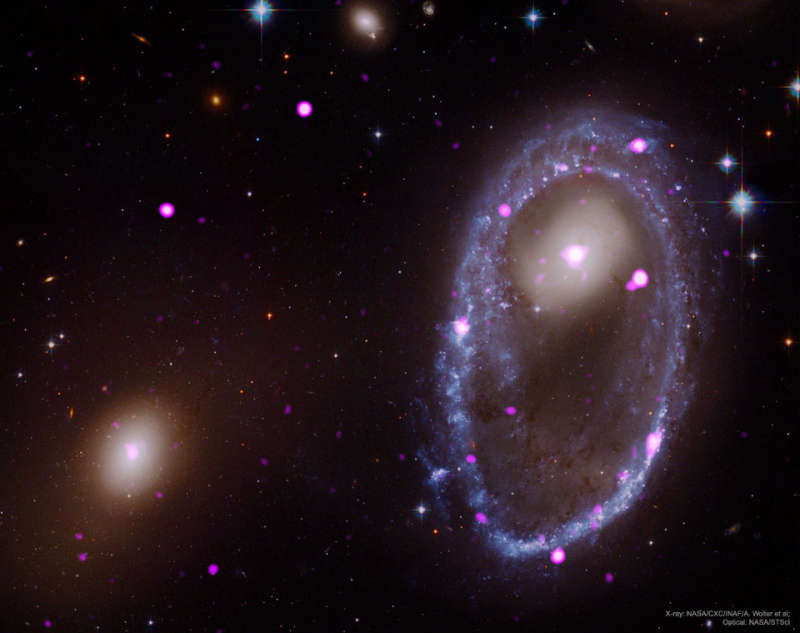Credit & Copyright: X-ray:
Chandra
(NASA,
CXC,
INAF,
A. Wolter et al.);
Optical:
Hubble
(NASA,
STScI)
Explanation:
How could a galaxy become shaped like a ring?
The rim of the blue galaxy
pictured
on the right is an immense ring-like structure 150,000
light years in diameter composed of newly formed, extremely bright,
massive stars.
That galaxy, AM 0644-741, is known as a
ring galaxy and was caused by an
immense galaxy collision.
When galaxies collide,
they pass through each other -- their individual stars
rarely come into contact.
The ring-like shape is the result of the
gravitational disruption caused by an entire
small intruder galaxy passing through a large one.
When this happens, interstellar gas and
dust become condensed, causing a
wave of star formation
to move out from the impact point like a
ripple across the surface of a pond.
The likely intruder galaxy is on the left of this combined image from
Hubble
(visible) and
Chandra
(X-ray) space telescopes.
X-ray light is shown in pink and
depicts places where energetic
black holes or neutron stars,
likely formed shortly after the
galaxy collision, reside.
Open Science:
Browse 1,800+ codes in the Astrophysics Source Code Library
1999 2000 2001 2002 2003 2004 2005 2006 2007 2008 2009 2010 2011 2012 2013 2014 2015 2016 2017 2018 2019 2020 2021 2022 2023 2024 2025 |
Yanvar' Fevral' Mart Aprel' Mai Iyun' Iyul' Avgust Sentyabr' Oktyabr' Noyabr' Dekabr' |
NASA Web Site Statements, Warnings, and Disclaimers
NASA Official: Jay Norris. Specific rights apply.
A service of: LHEA at NASA / GSFC
& Michigan Tech. U.
|
Publikacii s klyuchevymi slovami:
ring galaxy - galaktiki
Publikacii so slovami: ring galaxy - galaktiki | |
Sm. takzhe:
Vse publikacii na tu zhe temu >> | |
